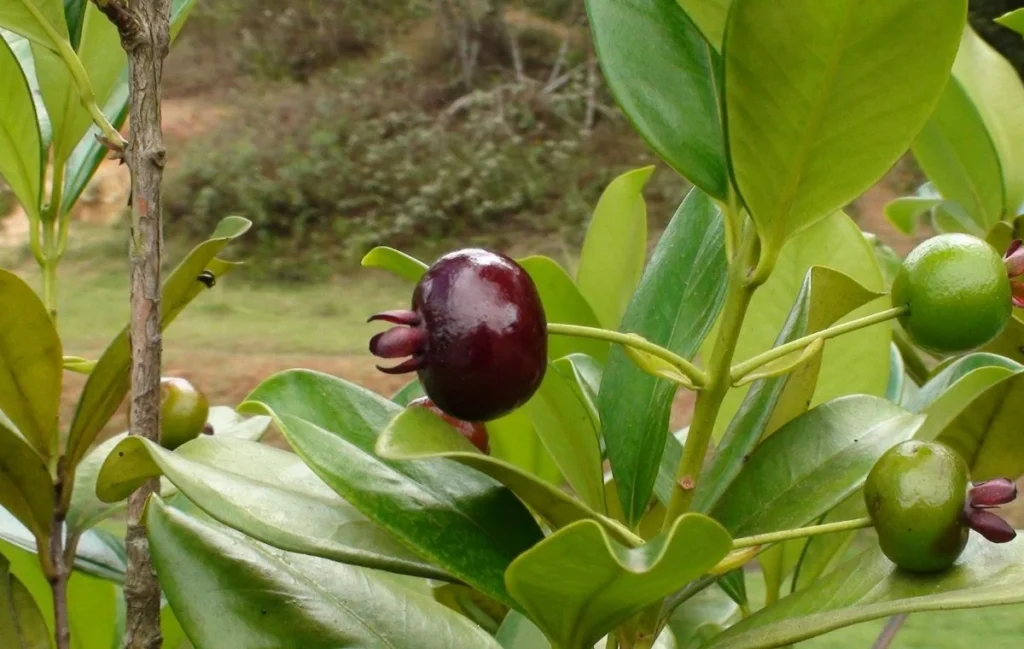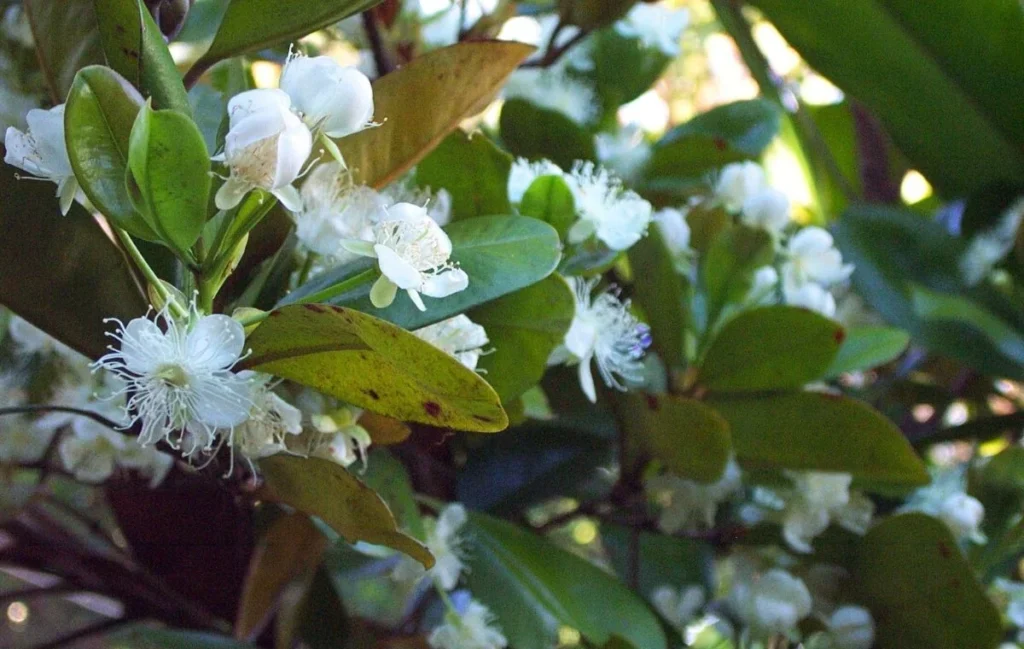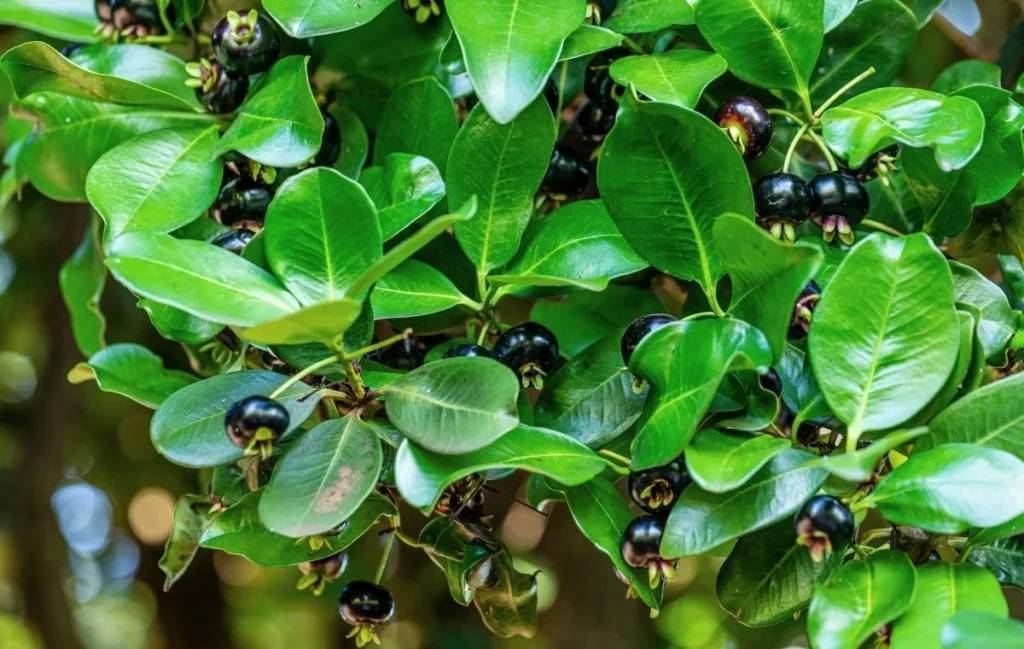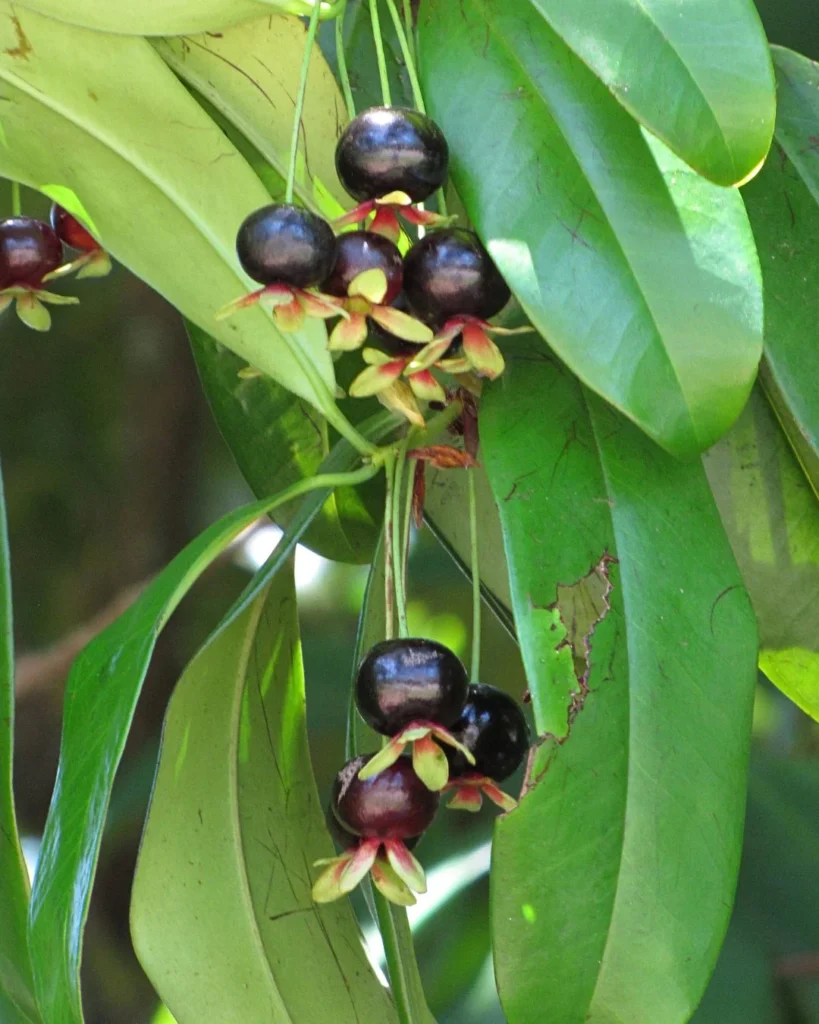The Brazil Cherry (Eugenia brasiliensis), also known by a range of names such as Grumichama, Brazilian Plum, and Spanish Cherry, is a medium to large-sized tree or shrub. It is a rugged native of Brazil’s glowing Atlantic Forest, spanning from the south of Bahia to the state of Santa Catarina. The name Grumichama, derived from the ancient Tupi word komixã, means “fruit that sticks or squeezes in the mouth when eaten,” likely alluding to the tannin content in the fruit, especially when unripe. Despite this, the ripe fruits are sweet and tasty, offering no such astringent sensation. Nevertheless, this robust species faces threats due to deforestation and degradation of the Atlantic Forest areas, being classified as vulnerable.
The Brazil Cherry is a remarkable tropical tree showcasing a branched structure, with a height ranging from 3 to 6 meters in open environments, and can reach up to 15 meters within dense forests. Its canopy is noted for its conical or pyramidal shape and the density of its evergreen foliage. The tree’s trunk is relatively short and straight, covered in a greenish-gray bark that peels away in longitudinal strips.

The leaves of the Brazil Cherry are striking in their glossiness and lack of hair, featuring a smooth surface. They are robust, leather-like in texture, with a peculiar obovate-oblong shape, meaning they are broader at the top and longer than wide, measuring 6 to 13 centimeters in length and 4 to 6 centimeters in width. The petiole, the small stalk that attaches the leaf to the branch, is about 1.5 centimeters long. The leaves have a tapered base, reminiscent of a wedge, and end in a short, rounded tip at the apex.
This tree’s flowers are a spectacle in themselves. Emerging either singly or in clusters of 3 to 5 in the leaf axils, each flower is composed of two sets of protective structures: the calyx, an outer part shaped like a small dome divided into four sepals, and the corolla, consisting of four delicate white petals that give a simple and elegant appearance. About 2.5 centimeters in diameter, these flowers not only beautify the tree but are also crucial for the species’ reproduction. Following pollination, in late spring and summer, dark purple spherical berries form, with a slightly acidic and deliciously juicy pulp enclosing large, rounded seeds.
In addition to the typical species, the Brazil Cherry has three botanical varieties: E. brasiliensis var erythrocarpus, with large purple or red fruits, E. brasiliensis var iocarpus, with black fruits, and E. brasiliensis var leucocarpus, adorned with yellow fruits. Each variety brings a distinct touch to both the palate and the aesthetics of urban and rural landscaping.

In the landscape, the Brazil Cherry stands out not only for its majestic structure and dense canopy but also for its lavish flowering. The small, cyclic flowers adorn the tree with pure white hues, creating a visual contrast against the dark green of the glossy, leathery leaves. Moreover, when fruiting, the tree is embellished with the vibrant berries that attract both the eye and birds, adding interest and dynamism to the garden. This mix of colors, shapes, and textures gives the Brazil Cherry a prominent place in any landscaping project, offering a natural spectacle that changes with the seasons. Cultivating the Brazil Cherry means investing in beauty, ecology, and history. It is about preserving a piece of the Atlantic Forest in your own garden, contributing to the continuity of a species that, despite adversities, remains a symbol of resilience and natural exuberance.
Its value extends beyond the ornamental. The Brazil Cherry is a melliferous species for various pollinators and attracts and feeds the birdlife crucial for the floristic reconstitution of degraded areas. The fruits are a treat to the palate, consumed fresh or used in juices, sweets, cakes, spirits, liqueurs, jellies, vinegars, and ice creams. For woodworking enthusiasts, the tree’s wood is also of great value, serving in furniture, handicrafts, and paneling production.

As for cultivation, this species is versatile. The Brazil Cherry can be grown in full sun or partial shade and adapts to different soil types, provided they are well-drained and rich in organic matter. The plant bears fruit abundantly, preferably in subtropical or tropical climates, with special attention to irrigation during flowering and fruit development. It does not tolerate the salinity of coastal regions. For propagation, haste and patience are recommended. The seeds are recalcitrant by nature, meaning they lose germination power quickly, so they should be planted fresh as soon as harvested. They require a sandy substrate enriched with organic matter and kept moist to germinate in 30 to 60 days. Seedlings should be grown in the shade and reach about 30 cm in 10 to 12 months. In the early years, the plant grows slowly but later rewards with fruit production, starting at 3 to 4 years of age.
When transplanting seedlings to their final location, consider an ideal spacing between plants of 5 to 6 meters in all directions, allowing them to grow without competition for resources. Prepare the soil in advance, about two months before planting, by digging holes 50 cm deep and wide. The composition of the soil is crucial: add a generous proportion of organic material, such as compost or well-rotted manure, to the excavated soil. Don’t forget to adjust the soil pH according to agronomic analysis and recommendation. Planting is most successful between October and November when the weather conditions are generally more favorable. After planting, water generously to help establish the plant. If the weather does not cooperate with regular rainfall, continue watering every fortnight to maintain the moisture necessary for the Brazil Cherry’s development in the first months. With these practices, the Brazil Cherry is set to thrive in your garden.


